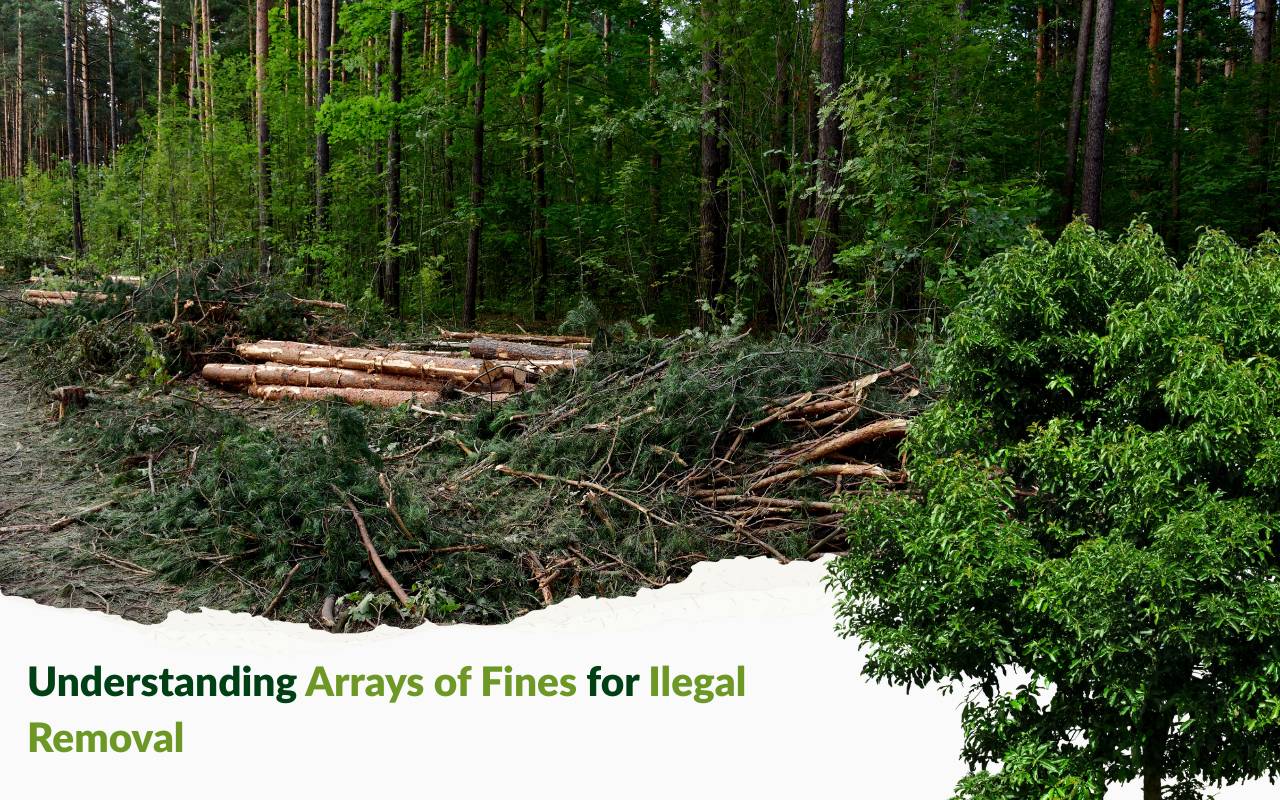
In today’s evolving world, managing resources responsibly is vital. Yet regulations are complex, and consequences often remain hidden. Here, fines for illegal removal shape outcomes, impacting businesses, individuals, and communities. Understanding these rules is not only about penalties but also about protecting the future and sustaining balance with nature.
Exploring the nuances of fines for illegal removal reveals more than money. These penalties carry ecological, social, and economic consequences. From destroyed habitats to damaged reputations, the ripples are widespread. Moreover, awareness makes us stronger stewards of the environment while preparing us to navigate modern conservation challenges.
The Impact of Illegal Removal on Ecosystems
Unauthorized extraction harms fragile ecosystems. When plants or soil vanish, erosion intensifies, damaging water quality and aquatic life. Removal of keystone species destabilizes entire food webs. In regions where penalties for unlawful removal lack enforcement, environmental decline escalates quickly.
- Soil erosion increases dramatically.
- Waterways become clouded and unhealthy.
- Wildlife habitats suffer disruption and collapse.
As a result, communities experience long-term harm, from displaced wildlife to declining pollinators. Restoration is possible, but prevention through strong regulations is far more effective.
Economic Ramifications of Illegal Removal Penalties
Illegal removal brings financial damage beyond ecosystems. Governments impose fines for illegal removal, but those penalties rarely cover true costs. Agriculture, fishing, and eco-tourism industries lose revenue when resources vanish. Additionally, public budgets suffer from increased enforcement expenses.
- Higher insurance premiums reflect rising risks.
- Local taxes may increase to offset deficits.
- Property values decline with damaged landscapes.
Therefore, effective use of fines should fund restoration, ensuring financial recovery while strengthening future resilience.
Social Consequences of Violating Removal Regulations
Communities near natural resources often suffer when regulations are ignored. Traditional livelihoods become unstable as supplies shrink. In addition, tensions rise, and contaminated water impacts health. Enforcement through sanctions for illegal extraction may sometimes cause distrust if handled poorly.
However, fair enforcement and inclusive decision-making build trust. Empowering locals ensures that penalties support, not divide, communities.

Endangered Species and Habitats Affected by Illegal Removal
Illegal extraction accelerates extinction. Orchids, medicinal plants, or rare reptiles disappear, harming fragile ecosystems. Without deterrent fines for illegal removal, genetic diversity shrinks, weakening global resilience. Consequently, conservation efforts must combine penalties with incentives for habitat stewardship.
Regulatory Scrutiny Resulting from Illegal Removal Activities
Increased violations invite stronger oversight. Agencies may add inspections and tighter requirements. While this promotes transparency, it raises compliance costs. Balanced frameworks are essential. Furthermore, penalties should support education and technical assistance, encouraging sustainable growth.
Long-Term Reputational Damage Caused by Illegal Removal
Organizations face lasting reputational harm after violations. Even when fines for illegal removal are paid, public distrust lingers. Media coverage intensifies damage, and investors may withdraw. Thus, restorative actions, such as partnerships with conservation groups, are vital for credibility.
Community Healing and Restoration Efforts Post Incidents
Communities play a key role in healing landscapes. Funds from illegal removal fines often support tree planting and habitat recovery. Moreover, these projects empower locals while creating sustainable economic opportunities, including eco-tourism and education programs.
Strategies for Mitigating Environmental Damage and Prevention
Prevention strategies must blend law and practice. Tiered fines discourage violations, while incentives reward responsible stewardship. In addition, technology like remote sensing and community reporting strengthens monitoring.
- Clear legal frameworks guide extraction activities.
- Incentives encourage sustainable use of resources.
- Capacity-building ensures communities stay prepared.
Public-private partnerships expand innovation, combining blockchain tracing and local participation for long-term protection.
Frequently Asked Questions
What are fines for illegal removal designed to achieve?
They aim to deter environmental violations, hold offenders accountable, and fund restoration programs that benefit communities and ecosystems.
How do these fines affect local communities?
Communities may face economic relief if funds support recovery. However, unfair enforcement can sometimes create social tensions.
Are fines for illegal removal effective in protecting endangered species?
Yes, especially when combined with habitat restoration and community incentives, they help protect species from extinction threats.
Do businesses face additional scrutiny after violations?
Yes, regulatory agencies increase monitoring, which raises compliance costs but also fosters accountability and transparency.
How can communities contribute to preventing illegal removal?
By reporting violations, joining restoration programs, and supporting awareness campaigns, communities play a central role in conservation.
The Role of Public Awareness and Education in Combating Illegal Removal
Education ensures lasting conservation change. Schools, media campaigns, and workshops teach people the consequences of illegal removal. Moreover, communities that understand how fines for illegal removal fund recovery efforts become active defenders of their environment.
To join responsible efforts, consider exploring our services. For specialized tree care, see our tree trimming solutions. Ready to take action? Contact us through our contact page today.
Fines for illegal removal highlight shared responsibility for protecting natural resources. They represent more than penalties; they symbolize accountability, education, and renewal. By coupling enforcement with awareness and community engagement, penalties transform into opportunities for sustainable stewardship.
